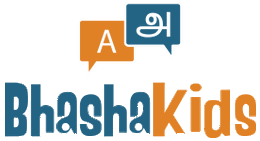| LISTEN to the Blog |
TIME - is running out.
TIME - we don’t have enough of it.
TIME - There are only 24 hours in a day, we can’t manufacture more.
It's September. The air is crisper, the leaves are turning colors, and our babies are back at school. As we watch them run into the doors, “When did they get so big?” we wonder.
ᴡʜᴀᴛ ʜᴀᴘᴘᴇɴᴇᴅ ᴛᴏ ʏᴏᴜʀ “ɪ’ᴍ ɢᴏɪɴɢ ᴛᴏ ʀᴀɪꜱᴇ ʙɪʟɪɴɢᴜᴀʟ ᴋɪᴅꜱ” ᴘʟᴀɴ?
⏱ The one you saved for later?
⏱ The one you would get to when the kids got older.
⏱ The one you would get to when you had more TIME?
What IF I told you there’s a way to “reimagine” your schedule and create time for bilingualism?
⭐️𝗧𝗵𝗲 𝗿𝗲𝗮𝗹 𝗽𝗿𝗼𝗯𝗹𝗲𝗺 𝗵𝗲𝗿𝗲 𝗶𝘀𝗻’𝘁 𝗧𝗜𝗠𝗘 - 𝗶𝘁’𝘀 𝗽𝗲𝗿𝗳𝗲𝗰𝘁𝗶𝗼𝗻𝗶𝘀𝗺. ⭐️
🔥There is no perfect way to raise bilingual kids.
🔥There is no “right way” to pass on your mother tongue.
🔥Every child and every family is different.
So let it be messy, imperfect, and even silly. But make time to fit it in. Studies show microlearning bursts of even 10 minutes a day add up to long term retention.
Microlearning? Can this technique really help us learn a second language?
Researcher Alexandra Marinskaya, writes “The current research shows that micro-learning activities contribute to foreign language learning enhancement. They help to improve language acquisition and retention, and students’ engagement. Among the functional advantages of micro-learning are accessibility, feasibility, the potential for individualization and learner-oriented approach implementation.”* (footnote below)
Here are 4 times of day that every family has together, where you can engage in your languages.
1. On the walk home from school
2. In the car on the way to an activity
3. At dinner time - or any mealtime
4. At wake-up and bedtime
Now you know the times you can work on language together. These are the moments where we can have an impact on our kids' lives. These are the moments they will remember.
Why not use that time to work on language? But...what do you say? How can you make these "microlearning moments" successful?
Think about it. These small moments should be meaningful, relevant and functional. This is not the time to drill random vocabulary words. You need to focus on authentic conversation and interaction relevant to that moment.
Here are some examples for each time of day, that you can translate into your own language:
Wakeup:
- "Brush your teeth"
- Ok, this line must be repeated across 80% of all households everyday!
- "Today will be a great day"
- Try some praise and encouragement in your language.
Mealtime:
- "Do you want water?"
- In Tamizh, this would be "Thanni venam-ma?"
- "Do you want chapati or rice?"
- In Malayalam, this could be "Chapati veno? Choru veno?" Giving choices helps elicit responses.
- "Tell me what happens to your food - where does it go?"
- This can double as a science lesson on the digestive system! And give your kids a chance to practice saying the body parts.

Coming home from school:
- "Which friend did you play with today?"
- "Tell me something fun you did."
Bedtime:
- "Are you sleepy?"
- "Which book should we read?"
Encourage your kids to respond in your language - start off with one word responses. Next, model full sentences for them. Try these out and work your way up. Encourage them to start responding in full sentences, as well as asking you for what they want.
Don't stress out parents! You got this! Every bit of exposure to your language helps your child on their journey.
Need more ideas for comprehensive and meaningful conversations prompts? Contact us and write the word CONVO. I'll send you a special preview of our new products - Conversation Cheat Sheets for Families.
*Marinskaya, Alexandra. (2020). Micro-Learning Efficiency For Foreign Language Teaching. 643-649. 10.15405/epsbs.2020.12.02.85.
Are you following us on Instagram @bhashakids? Check out our funny Reel on this blog topic!



Leave a comment